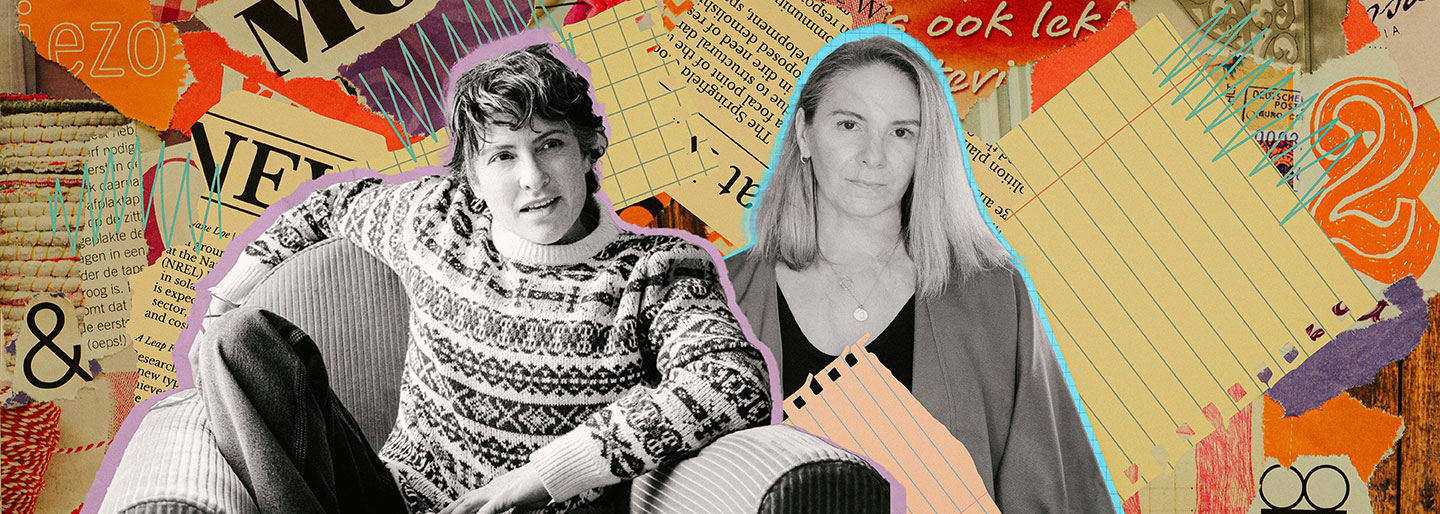WGAW members who employ other art forms while writing find it enriches their stories in surprising ways. We’re not just talking about such writers as Guillermo del Toro, whose journals are filled with extraordinary renderings of the monsters that have gone on to populate his films. The art can be rudimentary, while revealing new depths of meaning to the one doing the drawing.
“I’m a stick-figure type, but I do feel it freeing to move your pen and make any scribble, anything, it doesn’t matter,” says WGAW member April Shih (Fargo, Dave). Her journals are filled with notes and doodles. “It doesn’t have to look good because that’s not the point of it; it’s about allowing your body to give you the clues as to what your story might be about.”
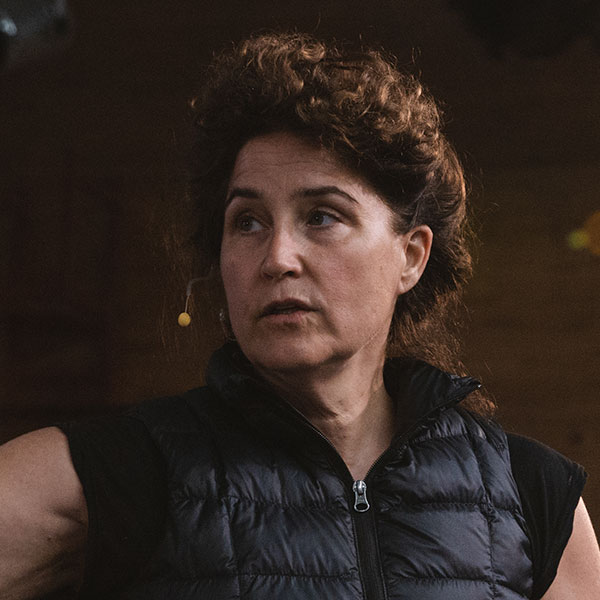 The Technique creator Joan-Scheckel. Photo by Megan Cullen.
The Technique creator Joan-Scheckel. Photo by Megan Cullen.Shih makes collages as well, often putting images up on a Miro board. She’s presently organizing an in-person retreat with her team for an untitled WGA animation project she can’t discuss yet, “because it’s big IP, but I’m feeling my way through it, because plot can get so heady, especially fantasy-type things,” she says. “We ordered foam core boards, and we’re going to do some collaging, and throwing stuff up—scribbles, words that pop up that feel thematic or relevant in some way. We’re calling it a vibe journey. At some point I’m going to have to write an outline, but not yet.” Those collages will help her find the story’s underlying emotions.
This process came about after she started taking workshops with Joan Scheckel in 2015. Scheckel is the creator of The Technique, which gives her students a range of tools to reach the truth in their work. A crucial aspect of it is embodying the work physically, through movement and other creative elements because, Scheckel says, “a TV show or movie is a visual medium. It is literally a collage of all the disciplines working together to tell one story that can be felt.”
Shih used to be what she calls a “heady” type of writer. “So the feeling aspect was missing for me, and I recognized that. I felt numb to the whole artistic process, and I craved more, and I wanted to write deeper things that hit more.”
Scheckel’s workshops did that for her. “Now I basically can’t work any other way,” Shih says. “My process involves a lot of lounging around, daydreaming and journaling and sketching.”
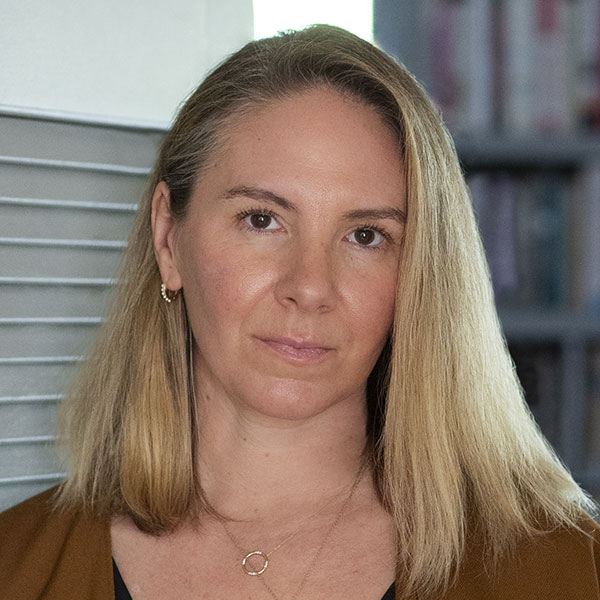 Emily Ziff Griffin. Photo by Lauren Pisano.
Emily Ziff Griffin. Photo by Lauren Pisano.Shih shows a journal page with scribbles representing beats. “This is the process, regardless of who I’m writing it for.”
WGAW member Emily Ziff Griffin is another student who took Scheckel’s tools to heart, and to the page. “It really changed how I think about writing because, in her workshops, if you’re creating a desire or an emotional state of being for a character, you have to be able to get up and do it, it has to be something you can physically embody in some way,” Griffin says.
Griffin was a dancer in high school and college, before she began writing, so she was already used to telling stories through movement to create emotion in viewers. Dancing now also helps her create emotion for herself as a writer. “For writers, just energy-wise, you know the feeling of sitting at your desk for hours; it is stultifying, and you kind of lose touch with the aliveness of the story that you’re trying to tell,” she says. “It can so easily dissipate when you aren’t recharging it by letting it rush through your system.”

Whatever you’re doing, make a room of it, make a wall of it, put it up.
- Joey Soloway
So if she’s alone in her office or at home, she will put on music and dance, to better access the feeling she’s working towards. “It’s deeply satisfying,” Griffin notes. “Feelings happen in the body, they don’t happen in the mind. So to think that you can accurately convey them just through an intellectual practice is perhaps misguided.”
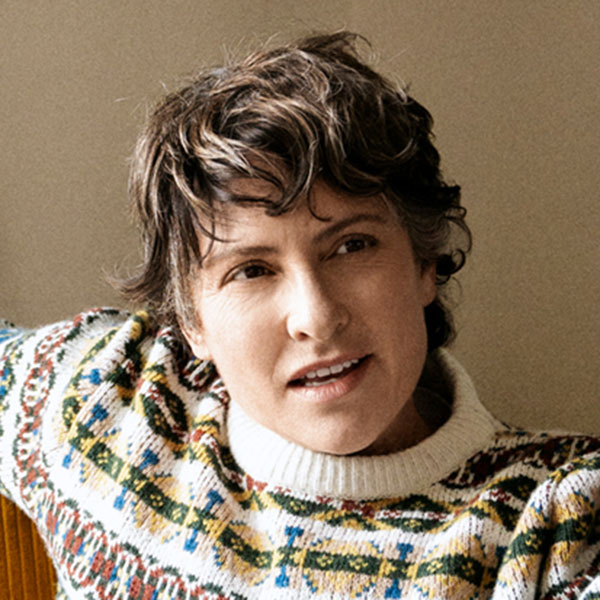 Joey Soloway. Photo by Sorrell Scrutton.
Joey Soloway. Photo by Sorrell Scrutton.Another workshop lesson involves constantly moving one’s pen, so Griffin also often writes by hand, keeping the pen in motion no matter what, which leads to drawings of shapes and images. They won’t make sense to her at first, “and then that unrefined part of your mind tries to create meaning around them,” says Griffin. “It’s trying to get your attention, often by directing you in ways that aren’t necessarily legible.”
“Just move your hand to the rhythm of the feeling,” Scheckel advises. “If you’re writing about rage, let your hand move with that intense and unpredictable rhythm as you draw, and then make that a monologue. That’s the point behind the dance, the drawing, the collage — so you can tap into the rhythm of the feeling itself that you’re trying to get at.”
“Self-consciousness is the number one creativity-killer,” says Scheckel. “Bring that natural sense of play that we’re all born with, and just say you’re allowed. You’re allowed to make a mess. You’re allowed not to know, you’re allowed to look silly. And then make sure that that goes in the script.”
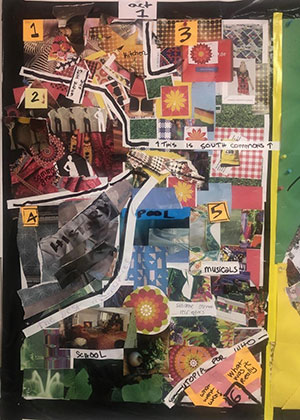 A collage by Joey Soloway.
A collage by Joey Soloway.WGAW member Joey Soloway remembers making collages on their bedroom wall as a teenager. “I never thought, Oh I’m a collage artist,” they say. But when they started attending workshops with Scheckel for their first film, Afternoon Delight, a light bulb went off.
“She was just like, ‘Nobody’s going to care about this movie as much as you,’” Soloway recalls. “’Get a room, make a bulletin board, cover it with images from your movie. Live in it.’ I was like, of course—instead of waiting for somebody to greenlight, you build the environment around you.”
They made extensive collages while creating Transparent, and would look at them with executives and department heads to see where the beats were and figure out where transitions would take place. That feeling, expressed in one art form, then found its way into the storyline.
Soloway offers some practical advice: go to a local bookstore and ask for magazine remainders, and start ripping away. Then take a look at your wall of index cards, they suggest. Your basic structure is already there. “This is index cards made pretty. Whatever you’re doing, make a room of it, make a wall of it, put it up.” And dance it out.


